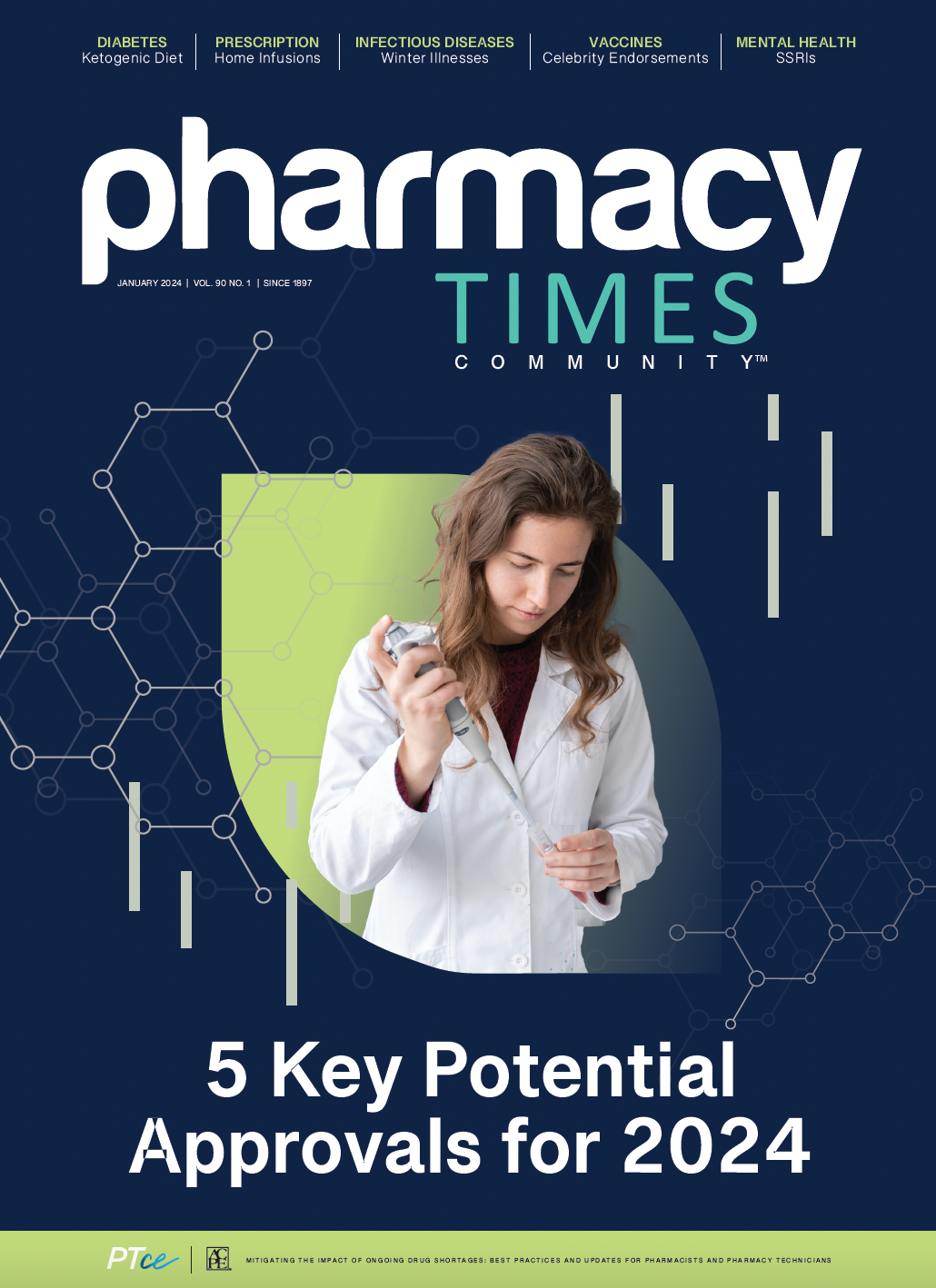Publication
Article
Pharmacy Times
Pharmacogenomics: An Opportunity to Do Pharmacy Differently—and Do It Right
Pharmacogenomics education, counseling, and monitoring create an opportunity to right yesterday’s policy wrongs
OBRA ’90: THE SECOND MOST DAMAGING PIECE OF LEGISLATION FOR COMMUNITY PHARMACY PRACTICE*
Image credit: Zamrznuti tonovi | stock.adobe.com

The Omnibus Budget Reconciliation Act of 1990 (OBRA ’90) contained within its normal budgeting legislation a provision to require counseling at the point of dispensing in community pharmacies for Medicaid recipients. The idea was sold to policy makers as a means of improving patient safety that would result in fewer adverse drug events, leading to cost savings for the federal government so that more money could be spent on other items in the budget. States subsequently adopted rules to meet this mandate and applied them to all patients, regardless of payer, for nearly all newly prescribed medications. Patient counseling, when provided as a dedicated, reimbursable activity by itself, or in combination with other reimbursable clinical services, has merit. Yet ample evidence (or lack of it), both quantitative and qualitative, would challenge whether counseling mandates alongside drug utilization review (DUR), without associated reimbursement, have accomplished either improved safety or budget offset goals in over 3 decades of practice.1
As things usually go with community pharmacy, OBRA ’90 was an unfunded mandate to the pharmacy sector and community pharmacy providers, with no explicit or reasonable expenditures or reimbursement to be provided to pharmacies for the extra work. Ultimately (and unsurprisingly), an inferred payment incorporated into the dispensing fee provided by third-party administrators and insurers has been the vehicle for reimbursement for these counseling services—meaning there is no real payment at all. At the time of writing, the going dispensing fee for Medicare and many commercial plans is in the range of $0.01 to $5.00, with most at $1.25 to $2.50. The cost of dispensing a single prescription now ranges from approximately $8.00 to $12.50, depending on the source information, pharmacy circumstance, geography, and payer mix. Providing any reasonable counseling services is a stretch with reimbursement amounts coming in lower than the cost of a coffee at Starbucks. Thus, the patient counseling mandate in OBRA ’90 has been destined to either: (1) not be performed with consistency or quality or (2) be performed, but with cost shifting through the elimination of some other activity. A similar market failure phenomenon has occurred in the long-term care arena with drug regimen reviews.
The Centers for Medicare & Medicaid Services (CMS) has published a booklet that describes the origins of the legislation and extols the virtues of patient counseling as well as the enumerated requirements:
“A patient’s complete understanding of how to use a prescription medication is critical to successful adherence to medication therapy. An effective counseling session between patient and pharmacist ensures that the patient receives essential educational information related to the medication and provides an opportunity for the patient to ask questions. Not only is patient counseling the right thing to do, it is mandated by law in most states. It is vital to document this care provision to validate compliance.”1
According to CMS, patient counseling requires the following information2:
- Name of the drug (brand name, generic, or other descriptive information)
- Intended use and expected action
- Route, dosage form, dosage, and administration schedule
- Common severe adverse effects or interactions and therapeutic contraindications that may be encountered, including how to avoid them and the action required if they occur
- Techniques for self-monitoring of drug therapy
- Proper storage
- Potential drug-drug interactions or drug-disease contraindications
- Prescription refill information
- Action to be taken in the event of a missed dose
PHARMACOGENOMICS ARE AN OPPORTUNITY TO PROVIDE PERSONALIZED CARE AND OPTIMIZE INDIVIDUAL MEDICATION REGIMENS
Pharmacogenomics has started to unlock some of the mysteries long vexing health care providers who prescribe and dispense medications to patients who do not respond to those medications as expected. Whether in the case of medications that don’t seem to work, amplified adverse effects, or multiple medications acting differently from expected together given already known and established metabolic pathways, genetics likely plays a historically underappreciated role in getting the right medication, dose, form, and interplay with the other medications, supplements, and food ingestion for a given patient.
MANY PATIENTS RESPOND TO MANY MEDICATIONS DIFFERENTLY FROM EXPECTED BASED ON PRODUCT LABELING
Pharmacogenomics is destined to catch on once the medical establishment and the wider public begin to realize the underlying challenge and opportunity associated with precision medicine. Studies have demonstrated that up to three-fourths of the population has a medication-gene interaction that is actionable with 1 or more commonly prescribed medications.3 The University of California, San Francisco, has now implemented a pharmacogenomics service on the premise that 30% of all adverse drug reactions can be eliminated with pharmacogenomics testing, with follow-up services to optimize a given patient’s medication regimen.4
PHARMACOGENOMIC REVIEWS, MONITORING, AND COUNSELING ARE NOT THE SAME AS DUR
Although DUR and point-of-sale edits have been successfully deployed to avoid “refill too soon” fills and as a mechanism to implement prior authorizations and other means to reduce drug expenditures, it has not fulfilled its promise of optimizing medication regimens and individualized service and counseling needs for most patients. As is now the case with immunization counseling for some payers, pharmacogenomics reviews and subsequent regimen adjustments and patient counseling should be paid for explicitly, and separately from the dispensing service and event. Only then will they not be reduced to a cost center to be minimized by not offsetting revenue.
LET THE MEDICATION EXPERTS LEAD THESE SERVICES
Pharmacists are the drug experts. I frequently hear from pharmacies performing pharmacogenomics testing that prescribers either are resistant to putting pharmacogenomic information into their medical legal record or are otherwise perplexed about what to do with it when presented with such critical information and the adjustments needed to provide individualized medication regimens, doses, and forms. And I don’t blame them. What little training was available in their didactic training on dose adjustments was not made up for during experiential training, where the pharmacy service likely guided the testing and treatment for patients with medication-gene pairs and their considerations. Let pharmacists lead these services and pay them to do it.
*Despite making drugs more affordable for Medicare enrollees, the single most damaging piece of legislation that caused community pharmacy practice to begin a downward spiral was the Medicare Modernization Act (MMA) of 2003, which neither modernized pharmacy services nor equipped the market to provide patient care services for Medicare recipients in a community pharmacy. In fact, the MMA is the single largest causative agent responsible for driving pharmacy practice to the point of breaking, with pharmacy staff now initiating walkouts due to patient safety concerns as a result of skeleton staffing, in turn resulting from abysmal to nearly absent reimbursement for safe and effective dispensing services. For more on this issue, see the upcoming February 2024 article laying out the case for criticism.
About the Author
Troy Trygstad, PharmD, PHD, MBA, is the executive director of CPESN USA, a clinically integrated network of more than 3500 participating pharmacies. He r eceived his PharmD and MBA degrees from Drake University and a PhD in pharmaceutical outcomes and policy from the University of North Carolina. He recently served on the board of directors for the Pharmacy Quality Alliance and the American Pharmacists Association Foundation.
REFERENCES
- Soumerai SB, Lipton HL. Computer-based drug-utilization review—risk, benefit, or boondoggle? N Engl J Med. 1995;332(24):1641-1645. doi:10.1056/NEJM199506153322411
- Patient counseling—a pharmacist’s responsibility to ensure compliance. November 2014. Accessed November 27, 2023. https://www.cms.gov/files/document/patientcounselingbooklet111414pdf
- Matišić V, Brlek P, Molnar V, et al. Experience with comprehensive pharmacogenomic multi-gene panel in clinical practice: a retrospective single-center study. Croat Med J. 2022;63(3):257-264. doi:10.3325/cmj.2022.63.257
- Leigh S. UCSF is first in California to provide drug-gene testing. University of California San Francisco. May 2, 2023. Accessed November 27, 2023. https://www.ucsf.edu/news/2023/05/425241/ucsf-first-california-providedrug-gene-testing


Measles Cases Climb to 800 in United States as Outbreak Spreads Across Borders




